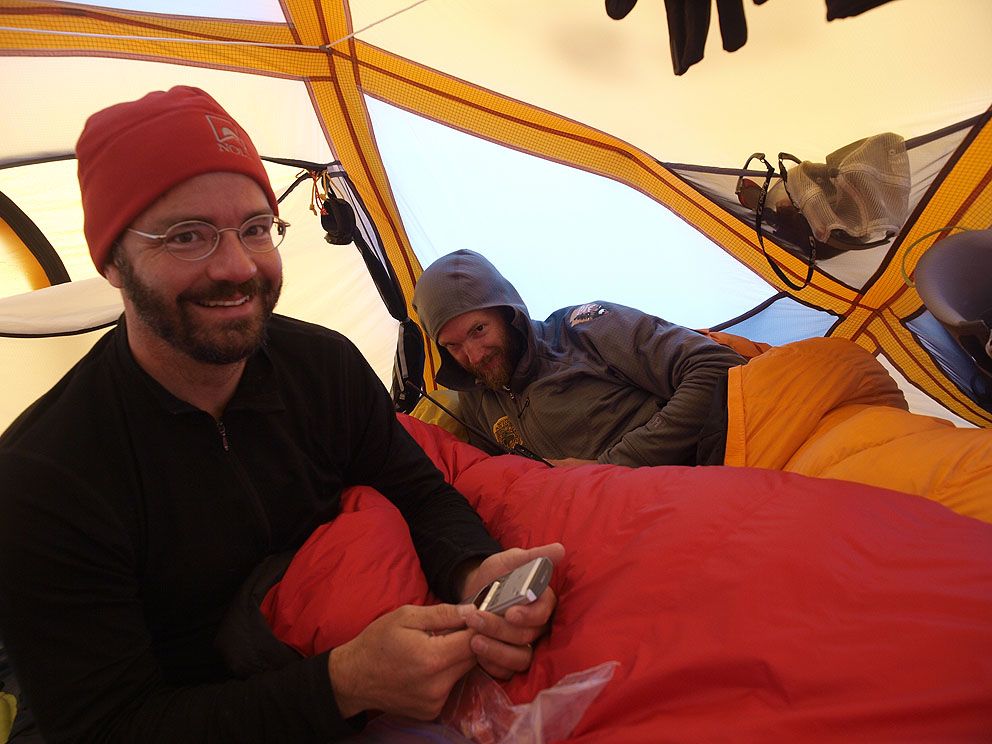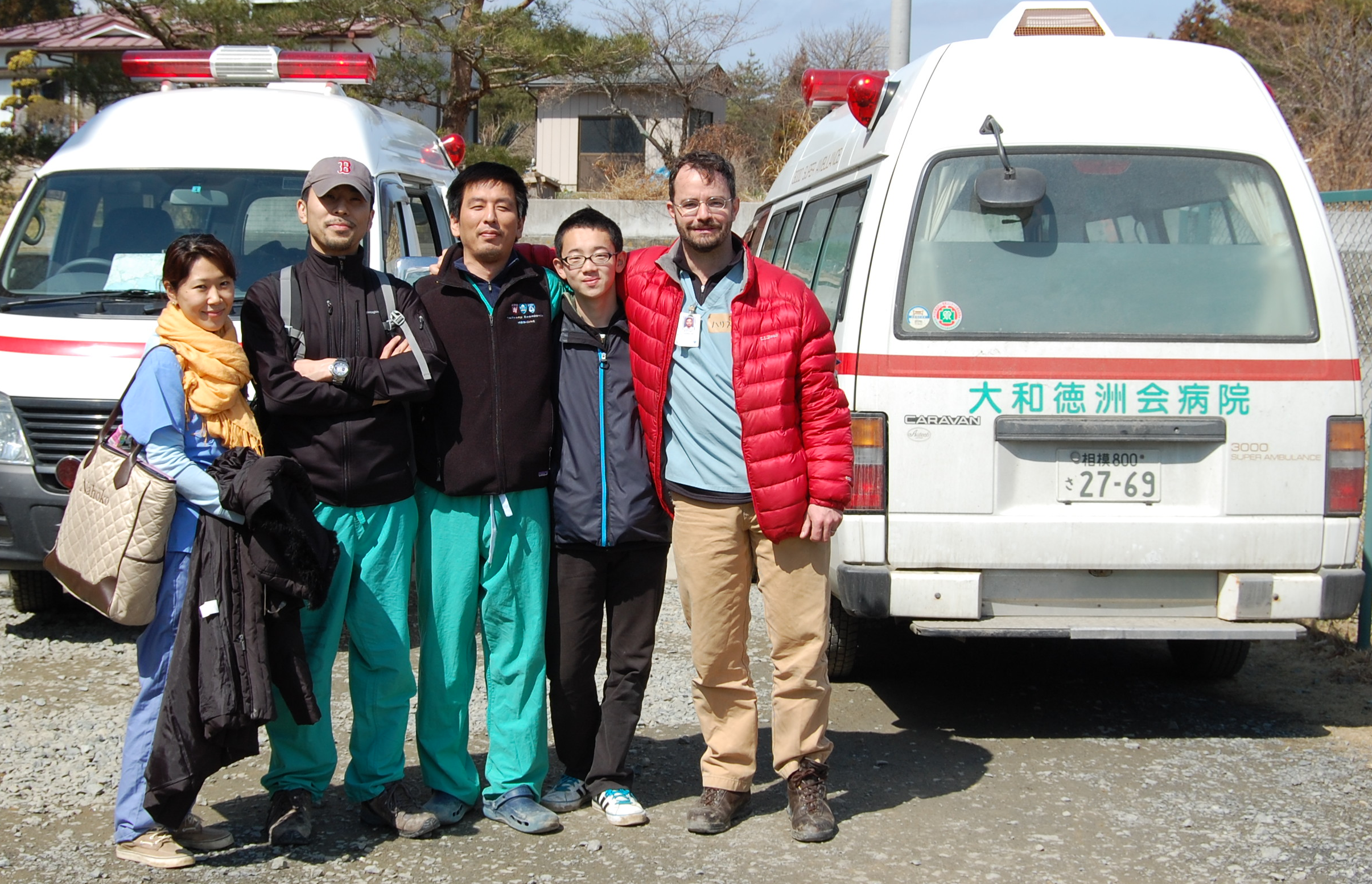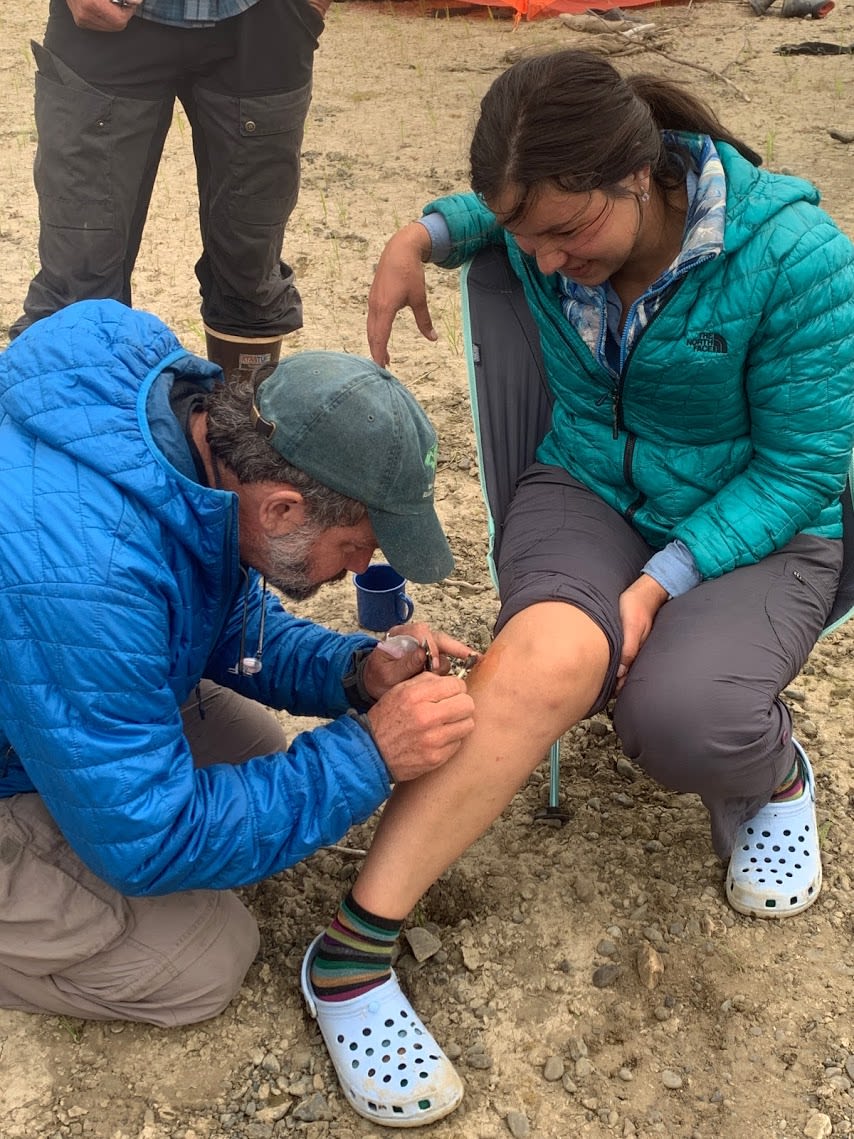Shaping Health Care on the Final Frontier
A trailblazer and global leader in wilderness medicine, Harvard Medical School Professor Stuart Harris, C’89, is using the lessons he’s learned in the wild to pioneer a whole new field of medicine for humans in outer space.

AS A PIONEER in the field of wilderness medicine, Stuart Harris, C’89, has treated patients in some pretty challenging places. He performed the first ultrasound at the summit of Denali. He has treated climbers for altitude sickness on their way up Mount Everest. He’s accompanied scientific expeditions, as the team doctor, up the Amazon and Mekong rivers, and he has investigated the effects of melting permafrost on community health in Siberia. In 2011, he attended to patients in the largely destroyed city of Kesennuma, Japan, in the wake of the Tohoku earthquake and tsunami, which triggered the Fukushima Daiichi nuclear disaster.
But Harris, chief of the Division of Wilderness Medicine at Massachusetts General Hospital (MGH) and a professor at Harvard Medical School, is now pushing for his specialty to be practiced in a place that will make his previous medical destinations seem tame by comparison: outer space. If wilderness medicine can be defined as “the provision of resource-limited medicine under austere conditions”—which is how Harris defines it—space would certainly seem like a natural fit. “In space you are resource-limited, without a doubt,” he says. “And it’s damn austere.”
As NASA and private space companies prepare to send humans to the moon and Mars in the coming years, the shape and scope of space medicine is now being determined. Up to this point, the healthcare model for astronauts has been primarily a preventative one. Send up the healthiest humans possible, and if someone gets sick or injured, you can bring them home relatively quickly. For decades this worked with low-orbit missions like space shuttle flights and stays at the International Space Station, and it more or less sufficed for the Apollo moon missions. But for extended moon visits or trips to Mars? “That’s so different,” Harris says. “That needs to be looked at. You can't depend on prevention alone. Put an astronaut there long enough, who is far enough away from Earth, and you will need the same diagnostic skills you need in an emergency department on Earth for your astronauts. An astronaut doesn't deserve less acute care expertise than anyone showing up in an emergency department in the Lower 48."
And yet that’s the entrenched mindset Harris and his colleagues at the Baylor College of Medicine in Houston are up against as they press for a practice-oriented model of acute care in space. The potential game-changer these doctors are initiating is a space medicine fellowship at MGH and Harvard that will train doctors how to provide health care to astronauts during missions. Harris used a similar strategy 14 years ago in shaping the field of wilderness medicine. He founded and continues to direct the MGH Wilderness Medicine Fellowship, a two-year program that sends doctors to Nepal, Alaska, the Andes, and other far-flung places to learn how to treat patients in difficult environments. “The next evolution of wilderness medicine is space medicine,” he says. "We've assembled an extraordinary team who can help define a new specialty. Again, it's where the species is going. That's why I got involved. It's an exciting moment."
Harris has always felt at home in the wilderness. Growing up in Lynchburg, Virginia, the child of two doctors, he spent most of his time paddling on the James and Murray rivers and negotiating the white water at Balcony Falls. When he wasn’t in a canoe, he was building mountain bikes before off-the-shelf mountain bikes existed. He says that when he arrived at Sewanee in 1985, he was one of only two people pedaling a mountain bike around campus.

Harris and team pictured in Kesennuma, Japan, during the response to the 2011 Tohoku earthquake and tsunami.
Harris and team pictured in Kesennuma, Japan, during the response to the 2011 Tohoku earthquake and tsunami.
Not surprisingly, the Domain attracted Harris to Sewanee, as did the University’s canoe team. The squad had some 50 members and was headed up by a pair of exquisite paddlers, Math Professor Stephen Puckette and Carrie Ashton, director of the outing program and a kayaker for the United States at the 1972 Munich Olympics. Harris captained the team for three years. He also logged significant hours as the assistant student chief of the Sewanee Volunteer Fire Department.
Harris majored in English, and while storytelling would play a defining role later in his life and career, it wasn’t academics that inspired him. “I was a terrible student,” he says. “I took perverse pride in making bad grades. I needed something different.” That something different came his junior year when he took a semester-long course in the Rockies with the National Outdoor Leadership School (NOLS). Harris spent 95 days straight living outdoors, pursuing a rigorous mix of mountain climbing, caving, rock climbing, winter camping, and desert trekking. By the end of it, there was no wilderness situation he couldn’t handle.
For six years after graduating from Sewanee, Harris lived an itinerant lifestyle, sampling a bit of everything. He lived for two years in an isolated Japanese mountain village, teaching English, studying judo, and writing a bad novel. He hiked for six months across Asia, blowing out his knee in the Himalayas. He taught English and coached whitewater boating at a boarding school in Western North Carolina, and he studied English and biochemistry at William & Mary. He spent a couple of summers on a fishing boat in Alaska. He got an MFA in creative writing at the Iowa Writer’s Workshop, where he met his future wife.
After finally deciding to follow in his parents’ footsteps, Harris earned an M.D. at the Medical College of Virginia while he also earned a bronze medal in the U.S. Whitewater Slalom Nationals racing with fellow medical student and Sewanee grad Elizabeth Harris, C’96. In 1999, he began a residency at Harvard with a focus on emergency medicine. Wilderness medicine as a specialty didn’t yet exist, although Harris knew that something like it was needed. He dedicated himself to making it happen. In addition to launching MGH’s wilderness medicine division and the corresponding fellowship program, Harris co-created the medical school course “Medicine in the Wild” for NOLS and has taught it for 18 years. "Medicine depends on a functioning biosphere," he says. "Using an experiential and literature-based curriculum, we encourage leadership on environmental public policy issues. We also teach a fundamental approach to good medicine: Wherever you are, learn to listen to your patient's story."

Harris treats a patient in the field during the Kwethluk River permafrost expedition in 2019.
Harris treats a patient in the field during the Kwethluk River permafrost expedition in 2019.
Over his many years of practicing, Harris has learned that storytelling is wilderness medicine’s most important diagnostic tool. When you’re dangling on the side of a mountain with an injured climber, and your only medical gear consists of what can fit inside your backpack, the best thing you can do as a doctor is to listen carefully to what your patient is telling you. “The doctor-patient relationship, the stories you tell each other, this is your central guide,” he says. “It’s your go-to in extreme environments.” In fact, Harris has come to view storytelling as the key to good medicine in all environments, be it the middle of the Sahara or the ER at Mass General. “It gets to the human core. Unfortunately, computers have crept in, and doctors are too busy looking at a screen and not the patient. That’s crap medicine. We’re a narrative species, not a number-driven species.”
This story-centered approach will translate to space medicine as well. “Google and AI can crunch the numbers,” Harris says. “And any medical student will know the science. But someone with four years of emergency training can extract a story and place it into a firmament.” For this reason, a key component of the two-year space fellowship program will be for fellows to work regularly in an emergency room setting. Additionally, they will study unique problems related to low-oxygen environments, toxic exposure, radiation, and clean air. They will delve into situations that can happen during launch and landing, the most dangerous aspects of space travel. And they will work with engineers five years out on issues pertaining to gear and equipment. “Space and weight are at a premium,” Harris says. “You’re going to need equipment that is light, small, and multipurpose.”
Recently, the American Board of Emergency Medicine publicly signaled its support of the fellowship program and the efforts of Harris and his colleagues. Meanwhile, the team is trying to get NASA and all of the commercial space companies to sign onto a memorandum of understanding. Harris says things are unfolding quickly now regarding what space medicine will look like moving forward. “It’s the Wild West right now,” he says. “You’ve got 90-year-old William Shatner blasting into space and all kinds of stuff. We’re basically in the early days of the Apollo program. This is a historic moment. But I think we’ll look back and say, ‘No shit. Of course we needed this kind of medicine in space.’”
